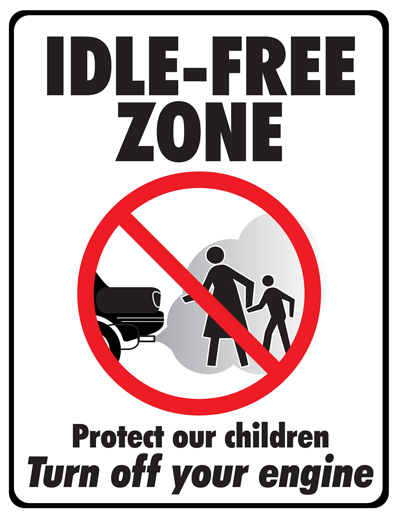
Article courtesy of the Clean Air Partnership
With the heat of summer now upon us, it may be tempting to crank the A/C in the car and enjoy the cool air while idling your vehicle. Unfortunately, making the choice to idle can wreak havoc on the region’s air quality – especially during the hot summer months when air quality conditions tend to be at their worst.
Idling is a major contributor to air pollution, yet many misconceptions exist regarding the need to idle and the negative effects of idling on our air, our engines and our pocketbooks. The next time you consider idling, consider the following idling myths and facts:
Myth: Engines should be warmed up before driving.
Fact: Today’s electronic engines do not need long warm-ups, even in winter. No more than 30 seconds of warm-up time is ever required.
Myth: Idling is good for your engine.
Fact: Excessive idling can actually damage your engine components, including cylinders, spark plugs and exhaust systems. Fuel is only partially combusted when idling because an engine does not operate at its peak temperature. This leads to the build-up of fuel residues on cylinder walls that can damage engine components and increase fuel consumption.
Myth: It’s better to leave the engine running than shutting it off and restarting it because “cold starts” are hard on the engine and use more gas.
Fact: Frequent restarting has little impact on engine components. Idling, however, forces an engine to operate in an inefficient and gasoline-rich mode that can affect the engine’s performance and reduce gas mileage. More than 10 seconds of idling uses more fuel than restarting the engine.
Myth: It’s better to leave an engine idling because “cold starts” produce more pollution.
Fact: Driving a car immediately after a cold start allows the engine to heat up significantly faster, especially in newer models. When the car heats faster, its catalytic converter becomes more efficient at reducing emissions — by as much as 99 percent.
For information on anti-idling initiatives, or to learn more about other steps you can take to help improve air quality, visit the Clean Air Partnership website at www.cleanair-stlouis.com, check out the Clean Air Partnership’s Facebook page or following us on Twitter @gatewaycleanair.


